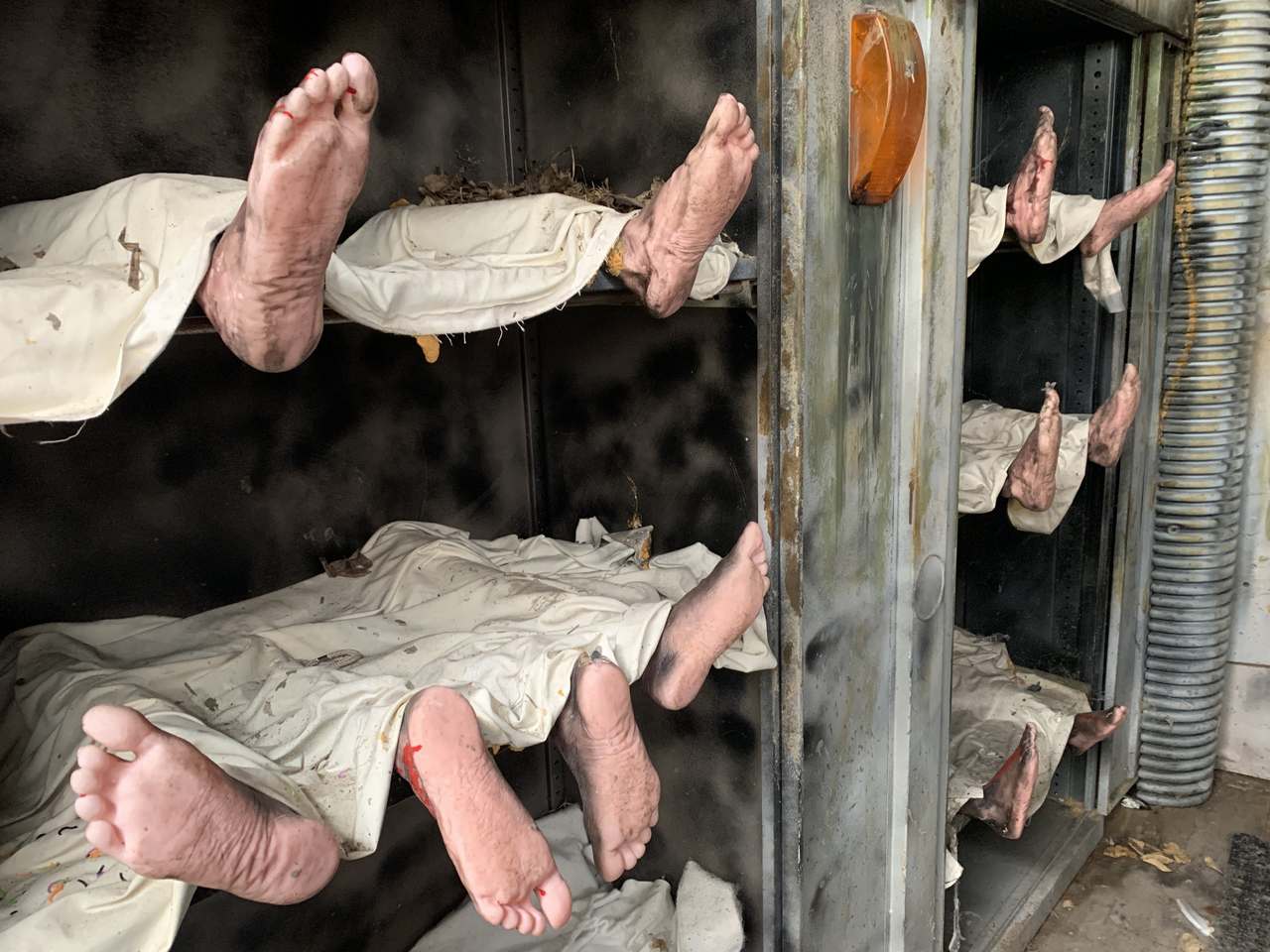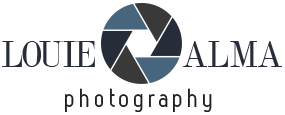‘It was during the Mad Cow disease outbreak that we decided to diversify from cattle farming,’ says farmer Matt as we walk past a stack of severed human legs. ‘It’s become very successful.’
What he and his family on Causey Farm have diversified into is not cannibalism, but selling genuine Irish farm experiences such as working with sheepdogs, cow milking, Irish cookery courses, ceili dancing, Bodhran playing and meeting the farm animals.

Fake human legs are ready to scare the bejaysus out of the crowds.
I had a quick Bodhran tutorial myself, which was great fun for all the family, and even made some soda bread before we walked a small preview of the many scares created for Farmaphobia, a Halloween theme park, whose fake human legs are ready to scare the bejaysus out of the crowds.
Halloween is very special to the historic and beautiful Boyne Valley area. It can be traced back to its Irish pagan origins right here, specifically the púca, a goblin shapeshifter that brings both good and bad fortune. In the charming town of Trim on the banks of the Boyne River, where I head to stay the night at the stylish Castle Hotel, before eating Irish steak at the nearby Stockhouse Restaurant, they are getting ready for the annual town-wide Púca festival on Halloween eve – the Celtic New Year.
There will be firelit processions, food, comedy, plays and music all in the shadow of the impressive ruins of Trim Castle, the largest Anglo-Norman castle in Ireland and which starred in Mel Gibson’s film Braveheart.
I joined a walking tour of the castle’s impressive exterior and interior, as well as making a brief visit to the armoury where an enthusiastic guide waved swords and maces around to make the point that battles back then were very messy affairs.
History goes back an incredibly long way here in County Meath, ancient castles and monasteries are dotted about everywhere. Not far from Trim, I visited the UNESCO World Heritage Site of Brú na Bóinne with its remarkable Passage Tombs that are even older than the Pyramids and Stonehenge.

Passage Tombs that are even older than the Pyramids and Stonehenge.
From the modern and informative visitor centre, we boarded electric buses to be taken through the green lanes to the protected site. Booking a time slot in advance is essential. Here among others is the enormous Newgrange tomb. It was designed so that a shaft of rising sunlight only enters the tomb at dawn on winter solstice day and just for a few dramatic minutes. If you’re not claustrophobic you can experience an emotionally moving recreation by slithering through the ancient narrow passage to the central chamber. We sat in the pitch dark just like the pagans of old, waiting for the first welcome sign that Winter had peaked.
Of course many people will know the Boyne Valley as the site of the 1690 Battle of the Boyne. Here King James II fought King William III who had acceded to the Crowns of England and Scotland the year before. William won and James fled Ireland never to return.
 The story is told in dramatic audiovisual at the Battle of the Boyne Visitor Centre in a restored 18th Century house on the Oldbridge Estate. If blood and gore aren’t your thing though, the restored Victorian walled gardens and five kilometres (no miles in Ireland, of course) of scenic walks over the battleground are gorgeous, while the sunny Brambles Cafe serves up a mean scone and coffee for when you return.
The story is told in dramatic audiovisual at the Battle of the Boyne Visitor Centre in a restored 18th Century house on the Oldbridge Estate. If blood and gore aren’t your thing though, the restored Victorian walled gardens and five kilometres (no miles in Ireland, of course) of scenic walks over the battleground are gorgeous, while the sunny Brambles Cafe serves up a mean scone and coffee for when you return.
This was not enough for my lunch though, so I headed next to The Glyde Inn in Annagassan, the ‘National Irish Pub of the Year’ in 2018. From the front it seems no more than a small pub in a terraced row of houses, but it backs on to the massive Dundalk Bay where the River Glyde enters the Irish Sea.
Passing through the cosy 1770s interior I walked out into breathtaking views of both the bay and the Mountains of Mourne. Of an evening at low tide the author of the Narnia tales. C.S Lewis, would walk over the sands to visit the pub in ‘this place of unearthly beauty’. The enterprising owners Paul and Ann O’Neill have built up the business since 1976 and recently created an engrossing VR headset experience to illustrate the village’s viking settlement history.
It comes with a Viking Lunch of local seafood including Carlingford oysters, superb Annagassan Crab Claws served in the shell with a lemon butter reduction, fantastic razor clams and the showstopping Clogherhead Black Sole baked and served on the bone with colcannon mash made green with Sea Radish foraged direct from the beach in front.
A walk up the Spire of Lloyd’s 164 step spiral staircase then worked off some of my lunch, the other reward being a three hundred and sixty-degree view across the countryside to the far horizons. They’d once light a beacon here to warn the distant manor house when the boss was returning from the hunt so they could put the kettle on.
Back on the ground the next day it was time to get on two wheels. The Boyne Valley to Lakelands Greenway Hub innovatively makes use of 30km of the route of the old railway line from Navan in Co. Meath to Kingscourt in Co. Cavan to give walkers and cyclists a real treat.
No traffic, no effort as it’s pretty much flat, just gorgeous countryside. At sixty five I’m no Tour De France winner, so it was great to find both ordinary and electric bikes for hire seven days a week at Park Beo from Feel Good Bikes, Family-owned and run, Park Beo started as a simple roadside cafe but now offers excellent local food and drink to eat on the spot or to take with you on your ride.
I’d not ridden an electric bike before, so I was a bit dubious, but within moments I was whizzing around the car park like a fourteen-year-old on a sugar rush. It’s so easy and such fun. We headed out onto the trail, the bike doing all the real work requiring only a gentle push on the pedals now and then to initiate the impressive power surge. It’s just the right speed to enjoy the fine views of fields and rivers, as well as chat to your fellow riders.
The old railway line is, of course, straight with no sudden bends so the going is easy. I could have happily ridden the route all day, or until the battery ran out whichever was sooner. For those ending up with an enormous appetite, the nearby thatched Kilberry Pub and Kitchen is a fine pit stop.
I had a reviving stew made with, what else but, Guinness that sang with tender local beef. And with that it was off to the Headfort Arms Hotel in Kells for the night, before taking the 35-minute drive on to Dublin Airport. Built in the mid-18th Century as the townhouse for the Marquis of Headfort, the hotel is charming and friendly and their award-winning Vanilla Pod restaurant served me up local produce with flair. Local black pudding is a must.
You need time to explore everything the beautiful Boyne Valley has to offer its visitors, but time is something the area knows all about. Here time almost stands still.
Fact File
FLY: Aer Lingus fly to Dublin with 9 daily flights between London Heathrow and Dublin, Ireland. One-way fares start from £59.99 each way including taxes and charges. For more information visit www.aerlingus.com” Nick’s visit was facilitated by discoverboynevalley.ie Park Beo Headfort Arms Hotel, Headfort Place, Kells, Co. Meath, Ireland https://www.headfortarms.ie/ Trim Castle Hotel,
STAY: Trim Castle Hotel Castle Street, Trim, Co. Meath, Ireland C15 FCY8 https://www.trimcastlehotel.com/ KilberryPub, Kilberry, Navan, Co. Meath, C15 PY79 https://www.thekilberry.ie/
EAT:
The post Into The Boyne Valley, Ireland appeared first on The Travel Magazine.




 The story is told in dramatic audiovisual at the Battle of the Boyne Visitor Centre in a restored 18th Century house on the Oldbridge Estate. If blood and gore aren’t your thing though, the restored Victorian walled gardens and five kilometres (no miles in Ireland, of course) of scenic walks over the battleground are gorgeous, while the sunny Brambles Cafe serves up a mean scone and coffee for when you return.
The story is told in dramatic audiovisual at the Battle of the Boyne Visitor Centre in a restored 18th Century house on the Oldbridge Estate. If blood and gore aren’t your thing though, the restored Victorian walled gardens and five kilometres (no miles in Ireland, of course) of scenic walks over the battleground are gorgeous, while the sunny Brambles Cafe serves up a mean scone and coffee for when you return.


